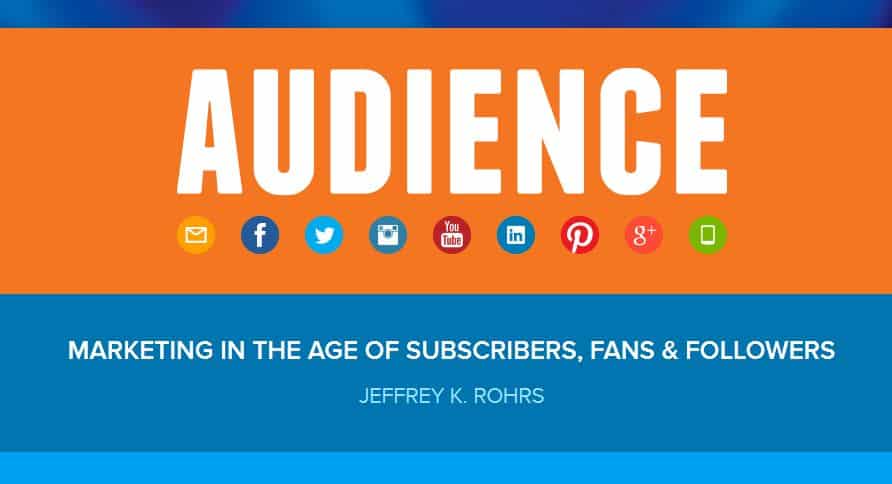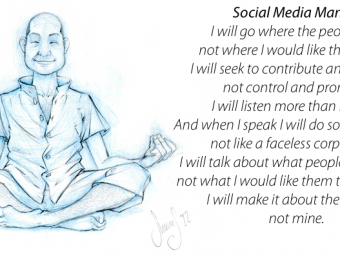Marketing in 2014: The audience imperative
As marketers continue to increase their own online publishing endeavors they should take care not to dismiss traditional media but rather em...
22 Jan 2014 6425 ViewsAs marketers continue to increase their own online publishing endeavors they should take care not to dismiss traditional media but rather embrace it as a role model for their own online marketing success.
Last Spring I met Andrew Davis at a marketing conference in Austria. He had just delivered an inspired talk about his book Brandscaping: Unleashing the Power of Partnerships. I was curious about his marketing background. As we talked after the event it became apparent that his background was not in marketing, at least not from the start. It was in publishing. He studied it and spent the first 8 years of his career working in TV. It was the third time in as many months I’d been that impressed by a marketer only to find out they had their roots in the traditional media world. Why was that? Because, like Liam Neeson, they have a very particular set of skills, skills that are becoming increasingly relevant to marketers: They know how to build an audience.

You’re going to be hearing a lot about audience in 2014. More specifically how brands need to build them. This isn’t a new concept. Marketers have always needed an audience. But we never had to make or manage one ourselves. What did we do instead? We rented.
We rented from companies who were experts in building and managing audiences. These were the newspapers, radio stations, TV networks, magazine publishers and email list providers. These different companies used content to attract and nurture mass audiences. Then they charged mass marketers vast sums to communicate with their audience in tiny slivers of exposure like one page or 30 seconds of airtime. This gave rise to the advertising industry that was charged with filling those tiny slots with communication.
Having a few gatekeepers doling out face time with the public in teaspoons is not ideal. A few of the downsides that marketers have had to contend with under this type of arrangement include:
- The cost of reaching the multitudes could be crippling to small companies
- Even large brands could not afford to communicate very much
- Restrictions imposed by the media limited us to one-way communication
- Access to the audience was granted on the gatekeeper’s schedule and terms
- The audience was general and did not allow for nuanced targeting
- It was also non-proprietary, meaning competitors have equal access to same audience
Nonetheless, this way of working has defined marketing thought for the past century and many of the routines we still follow today online. Like thinking about communication in terms of discreet, short-lived bursts of disposable interruption-based messaging as opposed to a steady, day-to-day flow of relevant content and interactions across multiple touch points.
The reason both marketers and consumers put up with this arrangement for so long was because we never had a viable alternative. The media monopoly was protected by three potent barriers of entry:
- They had the expertise in using content to attract and develop a certain audience.
- They had the means of production like printing presses and TV studios
- They had the means of distribution like delivery trucks and radio towers
Over the last decade all these traditional media have seen their audiences in decline with blame usually attributed to the internet. But traditional media has faltered for the same mundane reasons most businesses do: They chose to ignore clear signs in the market and decades later when the tipping point came they were unable to adapt in time. Moreover, as outlined above, the product they offered left a lot to be desired in the first place.
 As computers and the internet became mainstream they ate away at the barriers of entry that had protected mass media over the previous century. Today most of us have the means of production on our desktop, if not in our cell phones. And distribution requires little more than a WiFi signal. This allows us to cut out the middleman and speak directly with the world.
As computers and the internet became mainstream they ate away at the barriers of entry that had protected mass media over the previous century. Today most of us have the means of production on our desktop, if not in our cell phones. And distribution requires little more than a WiFi signal. This allows us to cut out the middleman and speak directly with the world.
Marketers in particular reveled in this newfound freedom. Many started blogging and Tweeting and Facebooking like crazy without any real idea why they were doing it. I suspect it just felt good for marketers to circumvent the gatekeepers and feel all that luxurious “free media” in their hands. This was quickly followed by the sobering realization that simply having the means doesn’t mean very much if you can’t show a result. Just look at the endless debate over ROI.
Having the means to produce and distribute content is like having a guitar and an amp. It is a necessary first step to being a rock star but provides no guarantee whatsoever that you will develop an audience. For that, you need skill. In his book Audience: Marketing in the Age of Subscribers, Fans and Followers author Jeff Rohrs quotes Bruce Springsteen:
“ The audience is not brought to you or given to you; it’s something that you fight for. You can forget that, especially if you’ve had some success. Getting an audience is HARD. Sustaining an audience is HARD. It demands a consistency of thought, of purpose, and of action over a long period of time.” —Bruce Springsteen

The mass media that we are displacing had two things that most marketers today lack:
- Expertise in using content to attracted and develop a certain audience
- A sense of purpose to their publishing: audience building and management
Yes we all have the means to produce content and yes we all have the means to distribute it. But that’ s not enough. Without the addition of the two aspects above we are simply playing online.
Expertise
Andrew Davis’ talk posed a convincing argument that to develop the requisite expertise we need to let go of our ad agency start-and-stop disposable communication mentality and learn from the established media that we are now competing with for the public’s attention. Look at the best practices that media have used to build audience and try to apply them. I.E. Consistency, regularity of publishing (guilty), owning a time slot, long-term franchises, venturing beyond text into video and audio, and attending to production value.
Purpose
The second point is a matter of mindset and discipline. It means understanding why you are publishing in the fist place. If asked why they invest in online networking (social) and content marketing many marketers today talk in circles about engagement and metrics and transparency and touch points and a hundred other peripheral topics. I suspect if you ask a media executive why they published you will get a much clearer answer: to build an audience. They accept that their ability to earn is entirely dependent on both the size and quality of their audience. Good advice for brands as well.
There is a reason why media outlets are the first targets of a military invasion. When push comes to shove we all know that who ever commands the audience has the power. And typically the bigger the audience the more power. That holds true for brands today. It used to be the brand with the biggest media budget had the most power. The ability to use traditional media channels well is and will continue to provide brands with an advantage. But the real power lies with brands that manage to grow their own proprietary audience. Translated to marketing I’d venture that today the brand in your category with the biggest audience will have the most power.
Traditional media still play a vital role in promoting brands. But their role as exclusive gatekeepers to the masses is over. For marketers the playing field with traditional media has been evened with regard to production and distribution. But that’s just half the solution. The other two variables that remain in play for marketers are 1) clarity of purpose with regard to proprietary audience development and 2) development of editorial skills. For marketers looking to create an advantage for their brand in 2014, I’d offer these as a good place to start. And an excellent place to begin your education in this regard will be the strategies and tactics used by traditional media over the past century.
Like this post? You'll find more marketing insights in my new book: International Brand Strategy: A guide to achieving global brand growth, now available from booksellers globally. Order your copy here.






4 replies
Sean – another fantastic perspective. Thank for sharing. – Pete
Very well put Sean. Love the quote from The Boss!
Thanks Pete and Kerstin.
You may enjoy this further exploration of audience power: BRAND BEYONCÉ SHOWS MARKETERS HOW IT'S DONE.
http://www.brandrants.com/brandrants/2014/1/28/brand-beyonce-shows-marketers-how-its-done.html
Hi to every body, it’s my first visitt of this web site;
thjis blog includes amazing annd really good stuff in support of visitors.